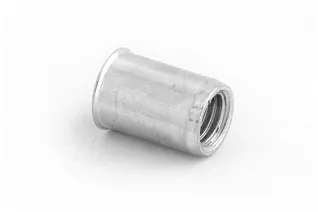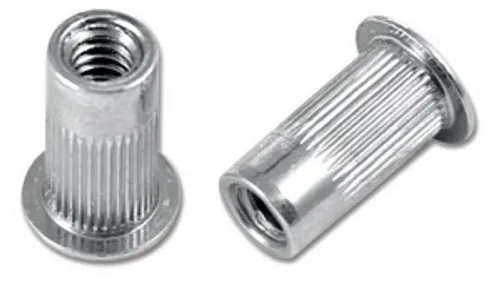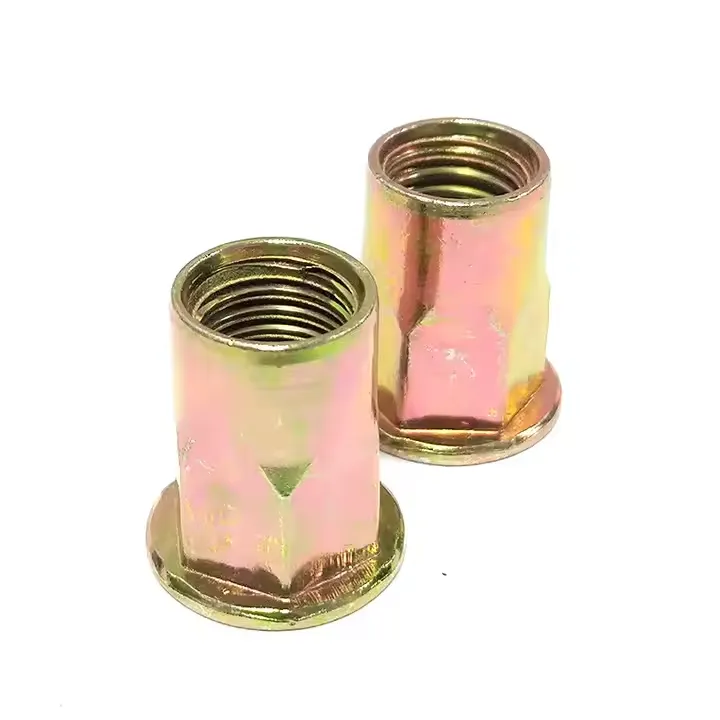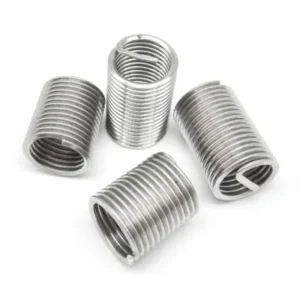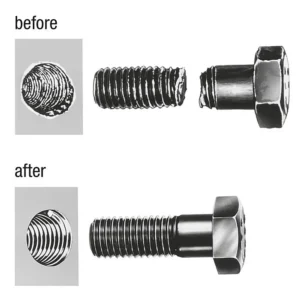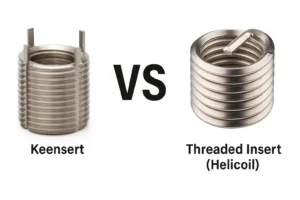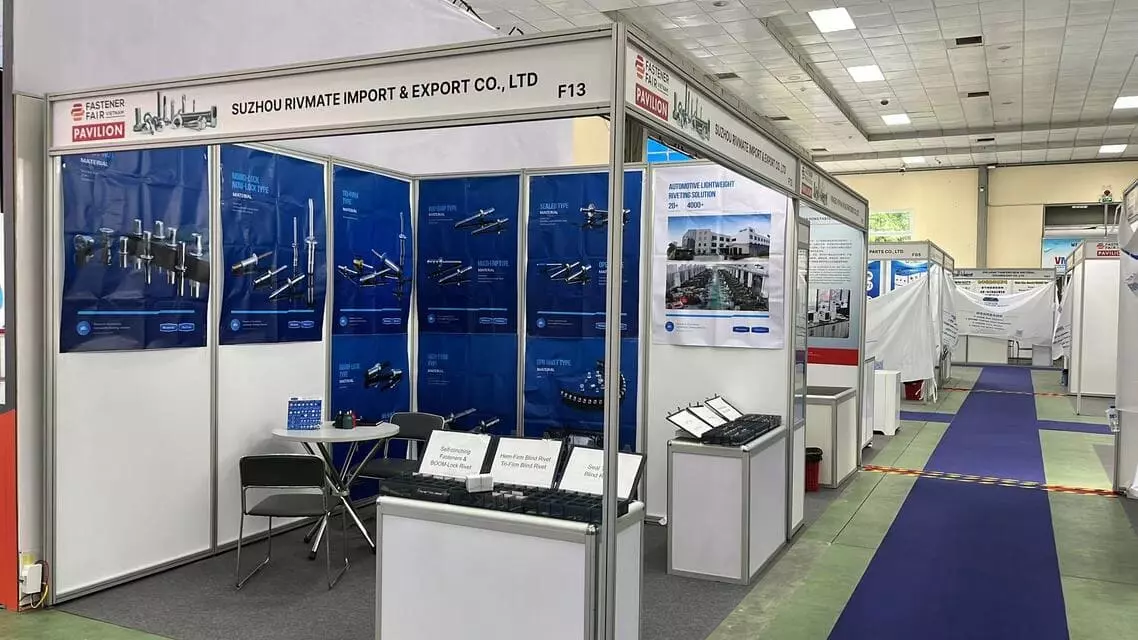What Is the Best Material for Rivet Nuts?
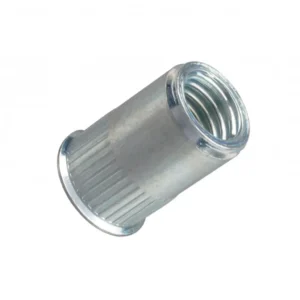
Leading Rivet Nut Manufacturer and Supplier in China
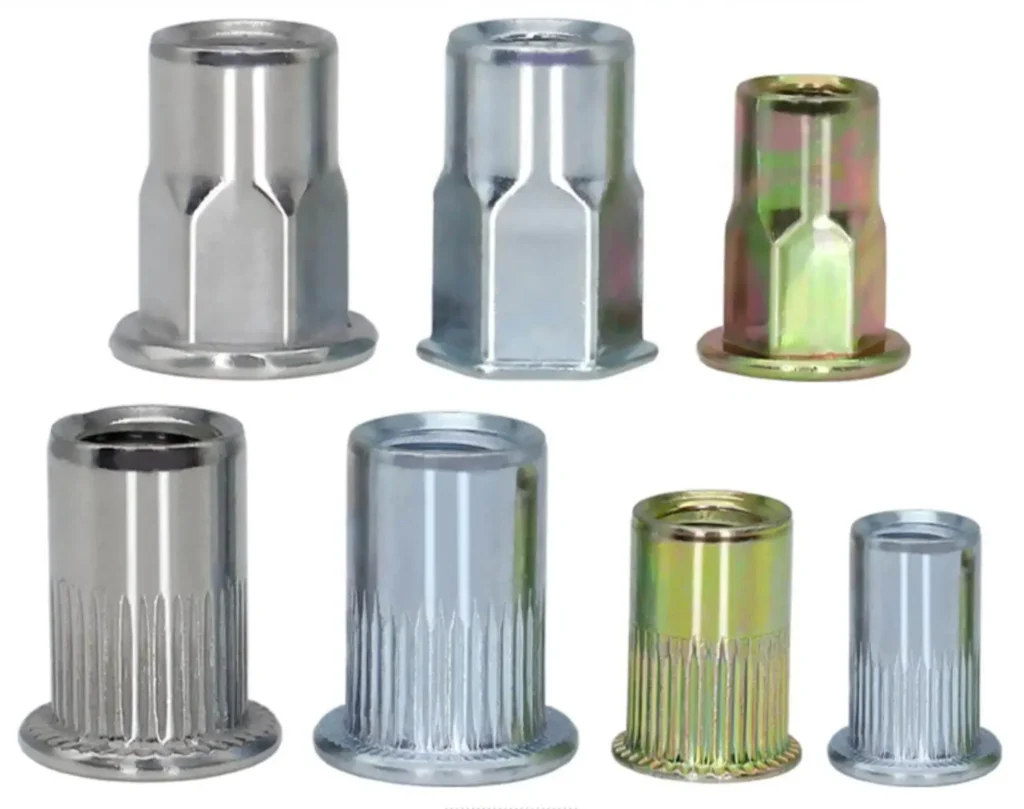
Choosing the best material for rivet nuts is essential to ensure strength, durability, and long-term performance in your fastening applications. With options like aluminum, carbon steel, stainless steel, and brass, each material offers distinct advantages and limitations depending on factors such as environment, load requirements, corrosion exposure, and cost. In this guide, we’ll break down the properties of each material and help you determine which one is best suited for your specific needs.
Table of Contents
What Are the Most Common Materials Used for Rivet Nuts?
a. Material Properties
Aluminum has a very low density (about ⅓ that of steel), offering excellent lightweight advantages.
It forms a natural oxide layer, providing good corrosion resistance, especially suitable for indoor or neutral environments.
Excellent machinability: ideal for mass stamping, deformation, and machining.
b. Core Advantages
Lightweight Design
Extremely lightweight, making it ideal for aerospace, aviation, and electronic products where weight control is critical.
Significantly reduces overall assembly weight in handheld devices and small structures.
Good Rust Resistance
Naturally oxidizes to resist corrosion in moist or neutral environments without the need for additional coatings.
High Installation Efficiency
The softness of aluminum allows easy tail-end deformation, requiring less force during installation.
Can be reliably installed using manual rivet tools, ideal for simple or portable workflows.
Moderate Cost
Slightly more expensive than carbon steel but still much more affordable than stainless steel, offering high cost-effectiveness.
c. Limitations
Mechanical Strength is Low
Yield strength, tensile strength, and hardness are all lower than those of carbon steel or stainless steel; not suitable for high-load or high-impact joints.
Poor Resistance to Harsh Environments
Although corrosion-resistant under neutral conditions, it can corrode in acidic, alkaline, or salt-spray environments.
Outdoor use requires anodizing or selecting a more corrosion-resistant material.
Limited Durability
Subject to wear and reduced clamping with repeated assembly/disassembly; not recommended for frequently maintained structures.
d. Typical Applications
Consumer electronics (laptop casings, smart home shell components),
Light industrial products (display stands, lamp shells),
Non-load-bearing vehicle parts (bicycles, e-scooters, drones),
Portable device assembly and compact structure installations.
a. Material Properties
An iron-based alloy with 0.05–2.0% carbon.
Offers excellent mechanical strength, rigidity, formability, and fatigue resistance.
Often surface-treated via zinc plating, electrophoresis, or phosphating for corrosion protection.
b. Core Advantages
- High Mechanical Strength
Excellent tensile, shear, and torque performance.
Can handle high preload and connection loads, ideal for heavy-duty connections. - Consistent Manufacture
Easily cold-formed or machined in large batches with precise threads and repeatable dimensions.
- Cost-Effective
Cheaper than stainless steel or copper, delivering high performance at a lower cost. - Versatile Compatibility
Supports various plating options—zinc, Dacromet, black oxide—and performs well in protected industrial environments.
c. Limitations
Limited Corrosion Resistance
Untreated carbon steel rusts readily in humid or salt-spray environments.
Even with coatings, it can degrade over time outdoors or in chemical settings.
Not Ideal for High Corrosion Environments
For marine, coastal, or chemical-industry applications, stainless steel is preferred.
d. Typical Applications
Heavy machinery and equipment frameworks,
Sheet-metal enclosures (control cabinets, server racks),
Automobile interiors and truck assemblies in non-corrosive settings,
Industrial furniture and assembly-line mass production.
a. Material Properties
Typically made from 304 or 316 stainless steel. 316 offers superior salt-spray resistance.
High chromium and nickel content ensures exceptional oxidation and corrosion resistance.
Yields comparable or higher strength than carbon steel and resists rusting.
b. Core Advantages
Exceptional Corrosion Resistance
Ideal for humid, acidic, alkaline, salt-spray, or high-temperature environments.
Preferred for marine equipment, outdoor facilities, and chemical installations.
High Strength and Stability
Tensile strength is 1.3–1.5× that of carbon steel.
Handles heavy loads and vibration without deformation or loosening.
High Reliability
Long lifespan with minimal maintenance—remains stable after installation.
Environmentally Sustainable
Fully recyclable, suited for eco-conscious projects.
c. Limitations
Challenging Installation
Hardness and low ductility make tail deformation difficult; requires high-powered pneumatic or electric tools.
Manual tools often cannot generate sufficient force, and tool mandrels wear faster.
High Cost
Typically 2–4× more expensive than carbon steel; suitable where performance justifies the cost.
d. Typical Applications
Outdoor infrastructure (streetlights, solar panel frames),
Automotive high-temperature/wet areas (engine bays, brake systems),
Marine vessels and oceanic equipment,
Rail and aerospace where corrosion resistance is critical,
Chemical and pharmaceutical equipment,
Food processing and cleanroom environments.
a. Material Properties
Commonly made from H59 or H62 brass, known for conductivity and non-magnetic properties.
Naturally features decorative golden tones and excellent formability.
Has inherent self-lubrication for smoother installation.
b. Core Advantages
Excellent Electrical Conductivity
Conductivity far exceeds that of steel or stainless steel; ideal for electrical or grounding connections.
Resistant to arcing corrosion.Good Corrosion Resistance
Forms a dense oxide layer, resisting moisture and mild chemicals—suitable for control cabinets and indoor electro-mechanical equipment.
Ease of Machining and Installation
Soft material is easy to cold-form, knurl, and thread; requires minimal tool force.
Smooth installation reduces bolt galling and extends longevity.Aesthetic Appeal
Golden appearance works well for decorative applications—instrument panels, premium furniture.
c. Limitations
Lower Mechanical Strength
Weaker tensile and shear performance than steel; not suited for heavy load or high-vibration uses.
Moderate Cost
Pricier than carbon steel, albeit cheaper than stainless steel—cost must be balanced for large volumes.
Limited High-Temperature Performance
Loses strength above ~250 °C; not suitable for high-heat environments.
d. Typical Applications
Electrical and grounding installations (switchgear, bus bars),
Instrumentation and decor where aesthetics matter,
Light mechanical assemblies (office equipment, medical devices, vending machines),
Non-magnetic or self-lubricating applications.
How Do Different Rivet Nut Materials Compare in Performance?
| Performance Metric | Aluminum | Carbon Steel | Stainless Steel | Brass |
|---|---|---|---|---|
| Strength | ★★☆ | ★★★ | ★★★★ | ★★☆ |
| Corrosion Resistance | ★★★ | ★★☆ | ★★★★ | ★★★ |
| Weight (Light → Heavy) | ★★★★ | ★★ | ★★ | ★★☆ |
| Cost (Low → High) | ★★★ | ★★☆ | ★ | ★★ |
| Installation Difficulty | ★ | ★★ | ★★★ | ★ |
| Typical Applications | Lightweight housings | Industrial equipment | Marine/Outdoor | Electrical assemblies |
What Is the Best Material for Rivet Nuts?
1. Outdoor, Humid, or Marine Environments
Recommended Material: Stainless Steel Rivet Nut

Environmental Characteristics:
Long-term exposure to air with moisture and rain;
Contact with salt (such as coastal cities or offshore platforms) or industrial corrosive gases (acidic, alkaline media);
Large temperature variations causing frequent thermal expansion and contraction of structural parts.
Reasons for Recommendation:
- Stainless steel offers excellent corrosion resistance and oxidation resistance, maintaining stability even in salt spray and acidic/alkaline environments;
- High strength with good tensile and shear performance, suitable for high-load or safety-critical structures;
- No need for additional coating maintenance, long service life, reducing maintenance costs.
Typical Applications:
Outdoor enclosures, surveillance equipment mounting brackets;
Photovoltaic panel support connections;
Offshore buoys, marine equipment, electric vehicle chassis;
Industrial fans or air conditioning units in high-humidity environments.
2. Industrial Assembly Lines / Cost-Sensitive Projects
Recommended Material: Carbon Steel Rivet Nut (with Zinc Plating)
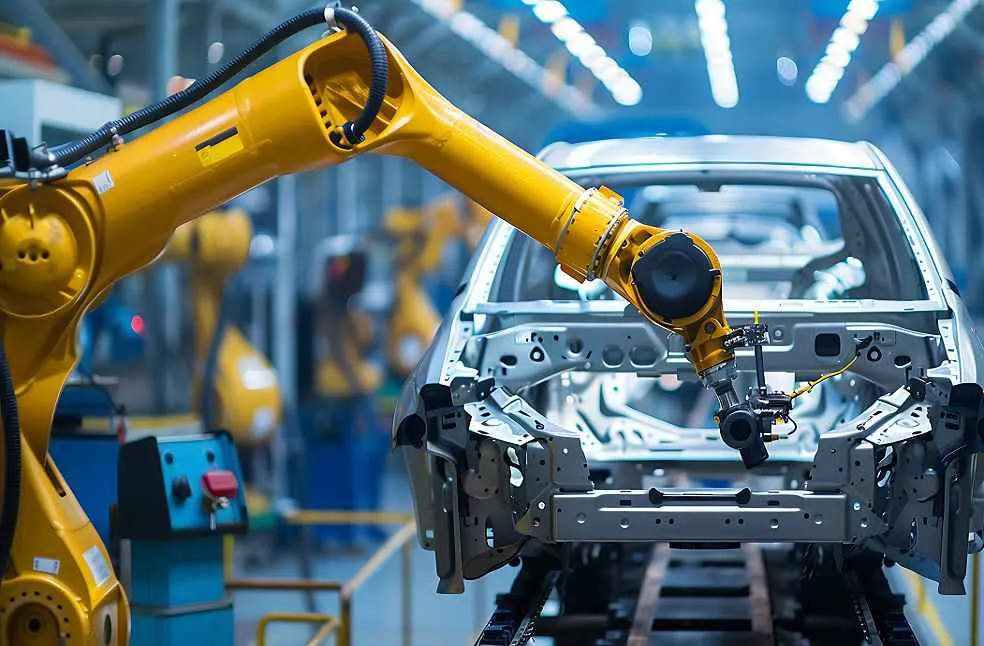
Environmental Characteristics:
Indoor or low-humidity industrial factory environments;
Medium strength requirements;
Focus on procurement cost and production efficiency, aiming for cost-effective units.
Reasons for Recommendation:
Carbon steel provides high strength and structural stability, suitable for applications requiring certain mechanical performance;
Zinc plating offers effective rust protection, meeting most indoor corrosion protection levels;
Low raw material cost, stable supply, ideal for large volume purchases;
Mature manufacturing processes compatible with various standard rivet nut tools, facilitating assembly line operations.
Typical Applications:
Household appliances, refrigerator sheet metal, air conditioner housings;
Industrial machinery, electrical cabinet assembly;
General sheet metal structures, display racks, furniture hardware;
Bicycles, fitness equipment, and other cost-sensitive areas.
3. Aerospace / Electronics / Lightweight Structures
Recommended Material: Aluminum Rivet Nut

Environmental Characteristics:
High demand for lightweight structures (such as aircraft and handheld devices);
Relatively clean environments with low exposure to corrosive media;
Some strength requirements, but weight control is the top priority.
Reasons for Recommendation:
Aluminum’s density is only about one-third that of steel, significantly reducing overall weight;
Lower installation force required, suitable for manual or light electric riveting tools;
Surface can be anodized or chemically treated for enhanced corrosion resistance;
Aluminum is non-magnetic, avoiding interference with electronic signals, ideal for electrical enclosures.
Typical Applications:
Drones, aircraft interior parts, satellite structural attachments;
Laptop casings, communication equipment, instrument panels;
Portable medical devices, e-readers, and other lightweight assembly products.
4. Electrical Enclosures / Busbar Connections / Conductive Applications
Recommended Material: Copper Rivet Nut

Environmental Characteristics:
- Requires stable electrical connectivity;
- May require frequent disassembly, with high oxidation resistance needs;
- Commonly used in low-voltage electrical systems, grounding systems, or control terminals.
Reasons for Recommendation:
Brass offers excellent electrical conductivity, low resistance, and stable contact as an electrical connector;
Naturally better corrosion resistance than ordinary carbon steel, preventing rust and oxidation to ensure long-term conductivity;
Installation produces minimal sparking, suitable for locations with electrical safety requirements;
Excellent machinability and high assembly precision.
Typical Applications:
Distribution boxes, electrical terminal strips, instrument housings;
Lithium battery busbar connections, energy storage device connection points;
Signal line grounding terminals in automation equipment;
Audio and broadcast equipment electrical connection assemblies.
How Does Material Choice Affect Installation Tools?
a. Specific Tool Requirements for Different Materials:
Aluminum Rivet Nuts:
Soft and ductile material, requiring relatively low pulling force during installation;
Can be installed using manual rivet nut tools or electric rivet guns;
Suitable for lightweight structures or temporary repairs, offering high installation efficiency with low tool demands.
Copper Rivet Nuts:
Slightly harder than aluminum but still considered a soft metal;
Usually installed smoothly with manual tools or light electric tools;
Care must be taken to avoid over-stretching which could cause cracking or thread stripping.
Carbon Steel Rivet Nuts:
Higher hardness and strength, requiring greater axial pulling force during riveting;
Recommended to use high-torque electric rivet guns or pneumatic rivet nut tools;
Tools must have strong mechanical durability to ensure proper deformation and clamping of the nut tail without slipping or incomplete riveting.
Stainless Steel Rivet Nuts:
The hardest and toughest material, placing the highest demands on installation tools;
Must use high-performance electric or pneumatic rivet nut guns capable of providing sufficient pull force and stroke length;
It is advisable to use specialized screw lubricants to reduce friction and torque load during installation.
b. Problems Caused by Improper Tool Use:
Accelerated Tool Wear: Using ordinary manual tools on high-strength nuts (like stainless steel) will quickly wear out the mandrel and may even burn out the motor.
Poor Riveting Quality: Insufficient tail deformation causes the nut to slip or loosen inside the hole, seriously compromising joint integrity.
Thread Stripping or Mandrel Breakage: Insufficient pulling force or unstable installation speed can damage the internal threads or break the mandrel.
Workpiece Damage: Failed riveting often requires re-drilling or nut replacement, leading to additional labor and material costs.
c. Summary and Recommendations:
When selecting rivet nut materials, tool compatibility and performance must be carefully evaluated;
For high-strength nuts (such as stainless steel), never use manual tools for hard pulling;
For industrial batch installations, prioritize efficient and durable electric or pneumatic tool setups;
Proper pre-lubrication and regular tool maintenance also help extend tool life and ensure riveting quality.
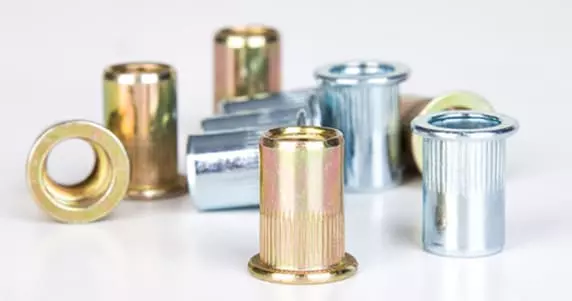
1. Unit Cost vs. Service Life
a. Aluminum Rivet Nuts
Advantages: Lightweight and relatively low cost, suitable for light-load applications with lower strength requirements;
Limitations: Due to lower strength and susceptibility to deformation, aluminum rivet nuts tend to fatigue and fail after repeated or prolonged use;
Service Life: Reasonable lifespan in light-load, non-corrosive environments but limited durability under heavy loads or outdoor conditions.
b. Carbon Steel Rivet Nuts
Advantages: High strength and moderate price, making them the most cost-effective choice in industrial assembly;
Limitations: Requires surface treatments like zinc plating for corrosion protection; may still rust over time during extended use;
Service Life: Suitable for indoor or dry environments, where proper maintenance can sustain good performance; lifespan decreases in humid or corrosive conditions.
c. Stainless Steel Rivet Nuts
Advantages: Excellent corrosion resistance and structural strength, suitable for extreme temperatures, humidity, and salty or harsh environments;
Limitations: Higher unit price and requires higher torque during installation, increasing equipment investment;
Service Life: Can last several years or even decades, especially in demanding applications such as transportation, marine, and defense.
d. Copper Rivet Nuts
Advantages: Good electrical conductivity and corrosion resistance, ideal for electrical applications;
Limitations: Lower mechanical strength compared to steels, limited load-bearing capacity;
Service Life: Can last long in non-structural electrical housings but prone to failure if subjected to mechanical stress.
Summary Recommendations:
For short project cycles and simple environments, lower-cost materials may be appropriate;
For long-term service or critical load-bearing parts, prioritize high-strength and corrosion-resistant materials like stainless steel;
Avoid saving on unit cost at the expense of frequent maintenance and failure—comprehensive life cycle cost evaluation is key to efficient material selection.
2. Maintenance Costs Under Environmental Impact
Humid Environments (e.g., outdoors, canopies, underground spaces)
Carbon Steel Rivet Nuts without proper plating or protection easily rust, discolor, and lose strength under moisture exposure;
Aluminum Rivet Nuts perform reasonably well in moderate humidity but tend to develop oxidation and powdering over long-term moisture exposure;
Stainless Steel Rivet Nuts naturally resist rust and maintain strength and appearance even under prolonged moisture, resulting in very low maintenance costs.
Coastal / High-Salinity Environments (e.g., docks, ships, coastal cities)
Salt aggressively corrodes metals; even plated carbon steel struggles to resist salt spray, suffering from pitting, cracking, and fatigue;
Aluminum resists rust but has poor salt spray corrosion resistance and may suffer from stress corrosion in such environments;
Stainless Steel (especially grade 316) is the only viable long-term option, requiring little to no maintenance and offering lifespan far beyond other materials.
High Temperature / Chemical Corrosive Environments (e.g., boiler rooms, chemical plants)
Aluminum’s mechanical properties degrade significantly at high temperatures, risking failure;
Carbon steel plating degrades faster under heat and chemical exposure;
Stainless steel offers superior heat resistance and chemical corrosion protection, suitable for demanding, durable fastening solutions.
Hidden Costs of Frequent Maintenance and Replacement
Using low-cost materials (e.g., uncoated carbon steel) may save upfront but lead to connection failures due to corrosion, necessitating nut replacements and often causing damage to base material holes, increasing rework, downtime, and labor costs;
Repeated replacements in hard-to-access or enclosed areas cause labor costs to skyrocket, severely impacting project efficiency;
Although stainless steel rivet nuts have higher initial costs, their high stability means fewer maintenance cycles or even maintenance-free operation, greatly reducing total life cycle costs.
Summary Recommendations:
For products exposed long-term to humidity, corrosive agents, or wide temperature variations, prioritize stainless steel rivet nuts;
Improper material choice in outdoor, coastal, or chemical environments results in frequent maintenance, structural fatigue, and even safety risks;
From a maintenance frequency and labor cost perspective, high-performance materials, though more expensive upfront, save money and ensure safety in the long run. Material selection should balance initial procurement costs with operational and maintenance investments based on long-term usage needs.
Summary: How to Choose the Best Material for Rivet Nuts?
① Define Your Application Priorities
- If load-bearing strength is the top priority (e.g., structural components, support frames), it’s recommended to choose high-strength carbon steel or stainless steel rivet nuts.
- For humid, corrosive, or outdoor environments, stainless steel rivet nuts offer superior corrosion resistance and long-term durability.
- If your application requires lightweight components (such as electronics or aerospace parts), aluminum rivet nuts are ideal due to their low weight and ease of installation.
- For electrical connections or conductivity needs, brass rivet nuts are preferred for their good conductivity and corrosion resistance.
② Match the Material with the Base Material
- The rivet nut material should be compatible with the strength of the base material to prevent installation damage or weak connections.
- Avoid galvanic corrosion caused by dissimilar metals (e.g., avoid using carbon steel rivet nuts on aluminum panels) to prolong the lifespan of the assembly.
③ Consider Tool Compatibility
- Aluminum and brass rivet nuts can be installed using manual or electric tools, making them suitable for general applications.
- Carbon steel and especially stainless steel rivet nuts require adequate pulling force; using pneumatic or hydraulic rivet nut guns is recommended for reliable installation.
④ Evaluate Cost and Production Needs
- For mass production, balance performance and unit cost control.
- In critical assemblies or applications where repairs are costly, prioritize reliable materials with low long-term maintenance costs.
- Factor in purchase budget, labor costs, and maintenance frequency when selecting the most suitable material.
Do You Have Any Questions?
Let Us Solve Your Problem
Why Choose Rivetfix
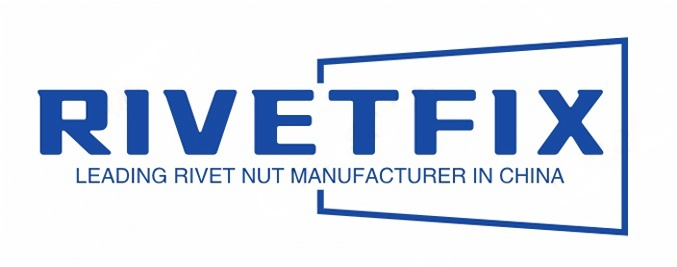
As a leading fastener manufacturer in China with more than 15 years in the industry, Rivetfix are committed to providing first-class quality fasteners and responsive services to the world. We offers a wide range of rivet nuts and clinch nuts designed to meet the unique demands of your projects. Rivetfix ensures you have the right solution for every application. Choose Rivetfix for versatile, cost-effective, and durable fastening solutions tailored to your specific needs. In addition, we can also provide customized rivet nuts service and clinch nuts according to your requirements.
Contact us now for more information and customization options on Rivet Nuts!
Get High Quality Rivet Nuts Quote!
Send Your Rivet Nut Request
For more than 20 years, Rivetfix has helped customers solve many rivet nuts sourcing needs and technical challenges.
Have a question? Contact us and we’ll provide you with the perfect solution.
